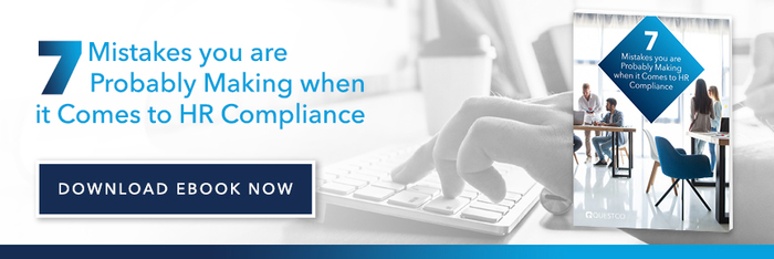.jpg)
The COVID-19 global pandemic took the world by storm. Some governments reacted swiftly while others lagged. Many businesses were forced to close their doors and risked losing their business.
In response, Congress passed the Coronavirus Aid, Relief, and Economic Security Act (CARES). The CARES Act created a program through which businesses could apply for financial aid. However, this aid was not guaranteed, and many companies found it challenging to get loans to keep them afloat. Evidence reveals that, along with other HR outsourcing benefits, Professional Employer Organization (PEO) clients were more likely to get Paycheck Protection Program loans.
What is a Paycheck Protection Program loan?
The Small Business Association (SBA) was tasked with administering the aid program to businesses, called the Paycheck Protection Program (PPP) loan. The PPP was designed to provide direct incentives to small businesses across the country to keep workers on payroll, even if the employees were not working.
Businesses who took out PPP loans would be eligible for forgiveness under certain circumstances.
What is the difference between Round 1 and Round 2 PPP loans?
The SBA originally allocated PPP loans at the beginning of April 2020. The funds were fully exhausted by April 16. This later became known as round 1 loans.
An additional $300 billion was allocated for a second round of loans starting April 27. There are still some funds available under this second round of PPP loans.
Unfortunately for many small businesses, there was inconsistent messaging and practices that occurred during the initial allocation of these funds. That meant that the money initially that was going to keep small businesses afloat during a global crisis went to large companies. You may have even read about some Fortune 100 companies taking out loans, even with billions of dollars in cash reserves. Many of the second round loans found their way to smaller companies, but, by that point, many small businesses had already folded.
How did PEOs assist their clients?
Confusion was rampant, and HR administrators were seeking guidance. No one could get a straight answer about where to get loans or when they could apply for forgiveness. The Government Accountability Office (GAO) found multiple examples of confusion on the core fundamentals of the program.
Eligibility Criteria
To get funds into the hands of small businesses as quickly as possible, the SBA created the rules of the program as they went. Understandably, companies needed money. But they also needed clear direction.
The lack of clarity around how businesses could use PPP funds, or how much had to be allocated directly to payroll made some businesses decide not to take a loan. This may have been detrimental to them.
In response, the SBA issued interim rules. In many cases, this simply caused more confusion. Small businesses who partnered with PEOs were able to lean on the support of the HR experts who could help the company determine whether they were eligible for a PPP loan.
Guided clients through the PPP loan application process
With this lack of clarity, small businesses needed an advocate on their side. They needed someone they could rely on to help them get clarity and understand the implications of taking a PPP loan. They also needed someone to help with the complex and changing application process.
That's where PEOs came to the rescue of their clients. PEOs provided the necessary documentation to small businesses, helping them apply for PPP loans. They provided employee-related data, which was essential to a quick approval.
Kept up with rolling changes to PPP
PEOs also kept up with the interim rule changes released by the SBA. With HR experts on staff, PEOs could quickly analyze and interpret the changes, giving small business owners the information they needed to make crucial business decisions.
Between April 3 and June 15 of 2020, the GAO found 18 changes and updates on key elements of PPP. Running a business while also trying to understand these sometimes contradictory changes could make business owners go mad.
PEOs were there to help.
What was the impact of PEOs on PPP loan acceptance?
The best part about having a PEO guide your small business through the first months of the COVID-19 pandemic was the success rate of getting a PPP loan. The nationwide average acceptance of a PPP loan is 30.1%. Conversely, 65.9% of PEO small business clients received PPP loans.
Not only were PEOs able to provide guidance that helped small businesses secure PPP loan funds, they were more likely to help companies get those funds in round 1. This meant that small businesses could weather the storm while retaining employees.
Of PEO clients who applied for PPP loans, 97.8% were approved. By having employee-centric reporting and documentation at the ready, PEOs were able to help their small business clients stay afloat during an unprecedented time.
PEOs Provide Comprehensive Aid
The average small business struggled to get PPP loan funds. SBA guidance was confusing and the application process was a nightmare.
With the guidance of a PEO, however, small businesses were able to succeed in getting approval for PPP loans. These funds were crucial to helping them survive the pandemic and the uncertainty of when their business would be able to open again and welcome customers.
Without a PEO, small businesses faced an uphill battle. Many did not survive. Among an entire suite of services offered to clients, PEOs help businesses weather the toughest of times.
.jpg)
Brandon Hartsaw
Acting as the Chief Operations Officer, Brandon actively promotes an environment of creativity, collaboration, and individual ownership to empower Questco team members to deliver exceptional client experiences.




